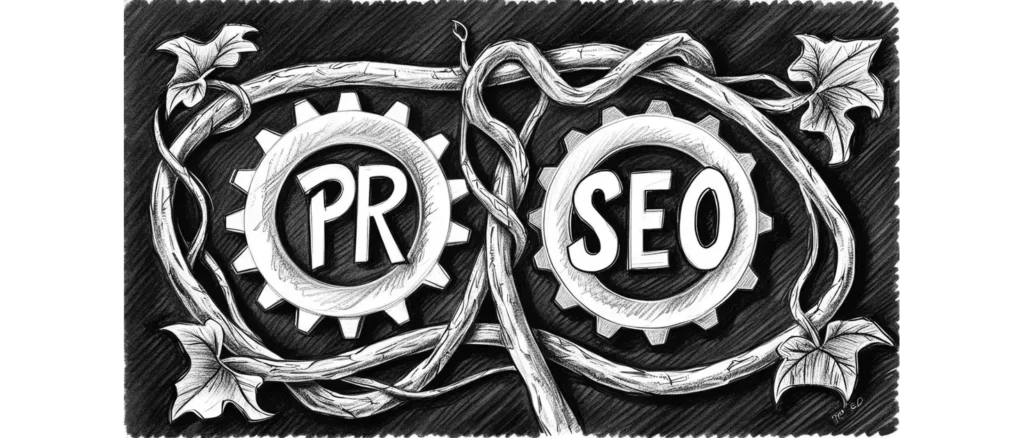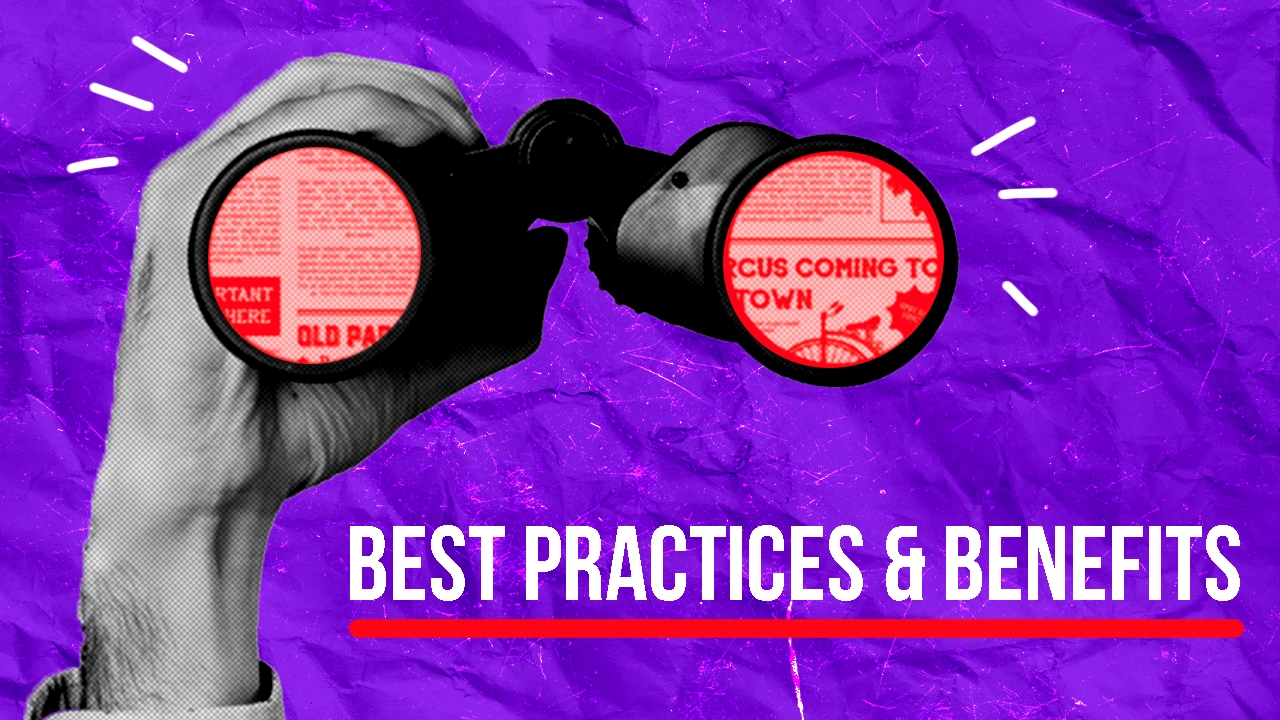In today’s hyper-competitive digital landscape, businesses are constantly seeking innovative strategies to increase their online visibility, enhance brand authority, and rank higher on search engines. While Search Engine Optimization (SEO) remains a cornerstone of digital marketing, integrating it with Press Release (PR) strategies can unlock a new level of synergy and impact.
PR, traditionally known for creating buzz and engaging with media outlets, plays a crucial role in establishing trust, credibility, and authority for a brand. On the other hand, SEO focuses on optimizing digital assets to achieve better rankings on search engines like Google. Together, these two strategies can complement each other by amplifying reach, driving organic traffic, and generating high-quality backlinks—one of the most significant factors influencing search rankings.
By aligning PR and SEO, businesses can ensure that their efforts are cohesive and targeted toward a shared goal: dominating the digital space. Imagine your press releases not only gaining media coverage but also appearing on the first page of Google searches. Picture your brand receiving recognition from authoritative websites that link back to your content, boosting both your visibility and credibility in the process.
This article dives deep into the process of combining PR and SEO strategies to improve rankings. You’ll learn how PR campaigns can support SEO objectives, discover actionable steps to integrate the two effectively, and explore emerging trends that can further enhance your results. Whether you’re a marketer, business owner, or PR professional, this guide will provide you with the insights and tools you need to succeed in today’s interconnected marketing ecosystem.
Before we get into the details, here are the key takeaways to give you a glimpse of what this article will cover.
Key Takeaways
Before we dive into the details, here’s a quick summary of what you’ll learn in this article:
- PR campaigns enhance SEO by generating high-quality backlinks and building brand authority.
- Optimized press releases can rank directly on search engines and amplify overall SEO efforts.
- A systematic approach to integrating PR and SEO ensures maximum impact.
- Emerging trends like AI-driven PR campaigns are transforming digital marketing strategies.
- Metrics like referral traffic, keyword rankings, and media mentions help measure the success of combined efforts.
Table of Contents

Understanding PR and SEO
What is Press Release(PR)?
Press Release (PR) refers to a strategic communication process designed to disseminate newsworthy information about a brand, product, or event to the public and media outlets. PR focuses on building positive relationships with audiences through credibility and trust. The ultimate goal is to manage public perception, drive awareness, and establish a strong brand presence.
In today’s digital-first world, PR has expanded far beyond traditional methods such as printed newspapers or radio mentions. It now encompasses:
- Online PR Distribution Platforms: Websites like PR Newswire and Business Wire allow businesses to reach journalists and digital news outlets worldwide.
- Content Marketing Integration: PR campaigns often align with blogs, articles, and thought leadership pieces to create a cohesive brand narrative.
- Social Media Amplification: PR professionals leverage platforms like Twitter and LinkedIn to distribute press releases, engage with journalists, and foster conversations around their brand.
Why It Matters: PR provides a foundation for trust and credibility. Without it, your brand’s messaging may not reach the audience it needs, and SEO efforts may lack the brand authority to maximize rankings.
What is SEO?
Search Engine Optimization (SEO) is the process of optimizing a website and its content to rank higher on search engine results pages (SERPs). SEO attracts organic traffic by aligning your content with the intent of your audience. Core components of SEO include:
- Keyword Research: Identifying the words and phrases your target audience uses to search for information.
- On-Page SEO: Optimizing elements like titles, meta descriptions, headers, and images to improve search engine readability.
- Technical SEO: Enhancing website performance through fast loading speeds, secure connections (HTTPS), and mobile-friendly designs.
- Off-Page SEO: Building backlinks and gaining mentions from authoritative websites to improve domain authority.
Why It Matters: SEO is essential for digital discoverability. With billions of searches performed daily, ranking at the top of relevant queries ensures your content is found by the right people at the right time.
Why PR and SEO Work Better Together
While PR and SEO are powerful independently, their true potential is realized when combined. Here’s why:
- Mutual Benefits: PR campaigns can generate content, mentions, and backlinks—all of which feed into SEO strategies. Meanwhile, SEO ensures PR efforts reach broader audiences online.
- Broader Audience Reach: Optimized press releases can rank directly on search engines, reaching consumers who may not see them through traditional media outlets.
- Enhanced Credibility: When PR campaigns establish a brand as trustworthy, it positively influences SEO metrics like dwell time and click-through rates (CTR), signaling relevance to search engines.
Key Insight: PR and SEO share a common goal: building visibility and authority. By combining their strengths, businesses can amplify their digital presence effectively.

The Synergy Between PR and SEO
How PR Campaigns Boost SEO
PR campaigns are an untapped goldmine for SEO strategies. They provide a wealth of opportunities to generate backlinks, improve brand visibility, and build authority. Let’s break this down:
- High-Quality Backlinks:
- Media outlets, journalists, and blogs often include links to your website when covering your story. These backlinks signal authority and relevance to search engines.
- Example: A technology company issuing a press release about a new AI tool may get coverage in industry blogs, creating organic backlinks.
- Keyword Optimization:
- A press release optimized for relevant keywords can rank directly on search engines. For instance, an article titled “How Our Product Reduces Carbon Emissions” can target terms like “carbon-neutral technology” or “eco-friendly innovations.”
- Social Proof and Authority:
- Being featured in reputable publications like Forbes or TechCrunch not only drives organic traffic but also elevates brand authority, which search engines value when determining rankings.
- Referral Traffic:
- Coverage from high-domain-authority sites directs engaged readers to your website, increasing the likelihood of conversions. This traffic boosts behavioral SEO signals, such as dwell time and pages per session.
The Role of Backlinks in SEO Success
Backlinks remain one of the most critical factors in SEO. Google considers them a vote of confidence in your content. Here’s why they’re vital:
- Improved Rankings: Websites with more high-quality backlinks tend to rank higher on SERPs. For example, a backlink from a news outlet like CNN carries more weight than dozens of links from smaller sites.
- Increased Domain Authority: More backlinks from trusted sources improve your website’s overall domain authority, making it easier to rank for other competitive keywords.
- Organic Traffic Growth: Backlinks are a direct channel for audiences to find your site, bypassing search queries entirely.
How PR Helps: A strong PR campaign generates natural, high-authority backlinks, which are difficult to replicate through other SEO strategies.
Enhancing Brand Authority Through PR
Building brand authority is essential for long-term SEO success. Search engines like Google prioritize content from sources they perceive as credible and authoritative. PR plays a pivotal role in shaping this perception by:
- Securing Mentions from Authoritative Outlets:
- Being featured in respected publications enhances brand visibility and trust. For example, a press release about a scientific breakthrough published in a journal like Nature boosts both credibility and rankings.
- Showcasing Industry Leadership:
- PR campaigns often highlight achievements, partnerships, or leadership insights. These elements reinforce your authority within your niche.
- Promoting User-Generated Content:
- Encouraging customers or clients to share their experiences through testimonials or reviews amplifies your credibility and provides user-generated content, a valuable asset for SEO.
Pro Tip: Include PR highlights such as “As Featured In” logos from major publications on your website. This not only improves user trust but also boosts SEO performance by increasing engagement metrics.

The Symbiotic Relationship Between PR and SEO
PR creates the story; SEO ensures it gets found. Together, they:
- Increase content longevity: SEO can keep PR campaigns relevant long after the news cycle ends.
- Maximize audience engagement: Optimized PR efforts ensure your brand reaches the right audience through both search engines and media outlets.
- Strengthen brand recall: PR’s storytelling combined with SEO’s visibility creates a lasting impression on your audience.
Step-by-Step Guide to Integrating PR and SEO
Combining PR and SEO requires a structured approach to ensure both strategies complement and amplify each other effectively. Below is a detailed, actionable roadmap to seamlessly integrate PR and SEO efforts.
Step 1: Set Aligned Goals
The first step is aligning the goals of your PR and SEO teams. While PR focuses on visibility and reputation, SEO targets organic traffic and search rankings. Merging these objectives creates a unified strategy:
- Identify Key Metrics: Establish KPIs that bridge both PR and SEO, such as backlinks generated, referral traffic, and keyword rankings.
- Target Audience Analysis: Understand your audience’s pain points and online behavior. This ensures PR content aligns with search intent and SEO strategies.
- Define Clear Outcomes: Examples include securing mentions in authoritative publications and ranking for competitive keywords.
Example: A technology startup may align PR goals to gain media mentions for a product launch and SEO goals to rank for keywords like “best AI software.”
Step 2: Optimize Press Releases for SEO
Press releases can serve as dual-purpose tools for media outreach and search engine visibility. To maximize their impact:
- Incorporate Keywords:
- Use primary keywords in the headline, subheadings, and throughout the body.
- Example: For a press release about a fitness app, target phrases like “top fitness tracking apps” or “best health apps 2025.”
- Use Engaging Headlines:
- Headlines should be concise, keyword-rich, and media-friendly. For example: “How [Your Company] is Transforming [Industry] with [Solution].”
- Add Internal Links:
- Link to relevant pages on your website to boost internal linking and guide readers to valuable resources.
- Leverage Rich Media:
- Include high-quality images, infographics, or videos to increase engagement and provide additional value.
Step 3: Leverage Media Coverage for Backlinks
PR campaigns often secure mentions in high-authority outlets, which can be leveraged for SEO gains:
• Personalized Outreach:
- Build relationships with journalists and bloggers to ensure your story gets the coverage it deserves.
- Use tools like HARO (Help a Reporter Out) to connect with media professionals seeking stories in your niche.
• Encourage Backlinks:
- When pitching stories, request backlinks to specific pages on your website.
- Example: “If you’re featuring our announcement, could you include a link to our product page?”
• Monitor Media Mentions:
- Use tools like Ahrefs or Google Alerts to track mentions of your brand and ensure they include backlinks.
Step 4: Utilize Social Media for Amplification
Social media is a powerful channel to distribute press releases and amplify their SEO impact:
- Share Press Releases:
- Post on platforms like LinkedIn, Twitter, and Instagram to reach a broader audience.
- Engage with Journalists:
- Tag media outlets and journalists in your posts to encourage them to share your content.
- Drive User Engagement:
- Encourage followers to comment, share, and discuss your press release, increasing visibility and SEO signals.
Step 5: Collaborate Across Teams
Successful integration requires close collaboration between PR, SEO, and content marketing teams:
- PR teams can identify media opportunities and create stories, while SEO teams ensure these stories are optimized for search engines.
- Schedule regular cross-team meetings to share insights, progress, and refine strategies.
Pro Tip: A collaborative culture ensures every PR effort contributes to your SEO success, and vice versa.

Case Studies: Successful PR and SEO Integration
Examining real-world examples of businesses that have effectively combined PR and SEO provides valuable insights into best practices and potential outcomes.
Case Study 1: Boosting Organic Growth Through PR
A SaaS company specializing in productivity tools launched a PR campaign to announce a new feature aimed at remote teams. Here’s how they succeeded:
• Strategy:
- Distributed press releases to industry-specific outlets like TechCrunch and Mashable.
- Optimized press releases with keywords like “remote work tools” and “collaboration software.”
• Results:
- Earned 50+ backlinks from authoritative sites.
- Achieved a 40% increase in organic traffic within three months.
- Ranked on the first page of Google for “best tools for remote teams.”
Key Takeaway: A targeted PR campaign can generate high-quality backlinks and keyword visibility, driving significant SEO gains.
Case Study 2: Ranking Higher with Optimized Press Releases
An e-commerce brand selling eco-friendly products wanted to boost visibility for their new product line. Here’s how they integrated PR and SEO:
• Strategy:
- Issued press releases highlighting their “sustainable materials” initiative.
- Optimized the releases for keywords like “sustainable shopping” and “eco-friendly brands.”
- Shared the press releases on social media and collaborated with green-living influencers.
• Results:
- Ranked in the top three positions for targeted keywords.
- Secured coverage in 15 niche blogs, generating backlinks that boosted domain authority.
- Increased referral traffic by 60%.
Key Takeaway: Combining optimized press releases with influencer outreach can lead to improved rankings and higher brand engagement.
Case Study 3: Leveraging Media Mentions for Backlinks
A fintech startup used a strategic PR approach to improve SEO performance:
• Strategy:
- Targeted major financial publications with press releases about their new cryptocurrency platform.
- Worked with journalists to include backlinks to their website in news stories.
• Results:
- Increased domain authority from 30 to 45 in six months.
- Achieved 100+ new backlinks from trusted media sources.
- Improved rankings for high-volume keywords like “cryptocurrency trading platforms.”
Key Takeaway: Proactively seeking backlinks during PR campaigns significantly enhances SEO outcomes.
Key Insights from Case Studies
- Optimize press releases with targeted keywords to ensure they rank on search engines.
- Collaborate with media outlets to secure high-authority backlinks.
- Use social media and influencer partnerships to amplify PR campaigns.
Explore Our Press Release Services
Ready to elevate your PR and SEO efforts to the next level? At Global Wave PR, we specialize in crafting optimized press releases that enhance your brand’s visibility, generate high-quality backlinks, and drive organic traffic.
Why Choose Global Wave PR?
- Comprehensive PR Solutions:
- We create newsworthy press releases that resonate with your target audience and meet SEO standards.
- SEO Integration:
- Our team ensures your PR campaigns align with SEO best practices, helping you rank higher and reach a broader audience.
- Results-Driven Approach:
- From generating media coverage to tracking backlinks and keyword performance, we deliver measurable results.
How We Help:
Beyond distribution, we provide analytics and insights to refine your strategies.
Customized Press Releases:
Tailored to your brand and optimized for search engines, our press releases capture attention and drive traffic.
Media Outreach:
We connect with top-tier journalists and publications to amplify your message.
Measuring the Success of Combined PR and SEO Strategies
A successful PR and SEO strategy requires ongoing measurement to ensure that your efforts are driving results. By tracking key metrics and analyzing performance, you can refine your campaigns and maximize their impact.
Key Metrics to Monitor
Here are the most important metrics to evaluate the effectiveness of your integrated PR and SEO efforts:
1. Backlinks:
- Measure the number and quality of backlinks generated through PR campaigns.
- High-authority backlinks from reputable publications carry more weight in search rankings.
2. Referral Traffic:
- Track traffic coming from press releases, media mentions, and shared links on social media.
- Referral traffic often indicates that your PR content is resonating with audiences.
3. Keyword Rankings:
- Monitor the performance of targeted keywords associated with your press releases and content.
- An increase in rankings shows that your SEO optimization is working.
4. Domain Authority (DA):
- Use tools like Moz or Ahrefs to track changes in your domain authority.
- Higher DA indicates that your site is gaining credibility with search engines.
5. Media Coverage and Mentions:
- Keep a record of all media outlets that feature your brand.
- Tools like Google Alerts or Mention can help automate this process.
6. Engagement Metrics:
Tools for Analytics
Several tools can help you track and measure the success of your PR and SEO efforts:
- Analyze social media shares, likes, and comments on your press releases to gauge public interest.
- Use this data to tailor future campaigns.
• Google Analytics:
- Monitor referral traffic, user behavior, and session durations.
- Set up goals to track conversions from media mentions and backlinks.
• Ahrefs or SEMrush:
- Identify and analyze backlinks generated from PR campaigns.
- Monitor keyword performance and domain authority.
• BuzzSumo:
- Analyze social media performance for your press releases.
- Identify top-performing PR content and media outlets.
• PR Monitoring Tools:
- Tools like Meltwater or Cision provide insights into media coverage, audience reach, and engagement metrics.
Analyzing and Interpreting Data
Once you’ve gathered the data, it’s essential to analyze it effectively:
- Identify Trends:
- Are specific types of press releases generating more backlinks or traffic? Focus on replicating successful formats.
- Evaluate ROI:
- Calculate the return on investment by comparing campaign costs to the value of backlinks, traffic, and brand exposure generated.
- Refine Strategies:
- Use insights from underperforming campaigns to identify areas for improvement, such as keyword targeting or distribution channels.
Emerging Trends in PR and SEO Integration
The digital landscape is evolving rapidly, and staying ahead requires adapting to emerging trends. Here are the most significant developments shaping the future of PR and SEO integration:
1. The Rise of Digital PR
Digital PR has become a cornerstone of modern SEO strategies. Unlike traditional PR, digital PR focuses on:
- Backlink Building:
- Digital PR campaigns emphasize securing backlinks from high-authority websites.
- Example: A travel company launching a campaign around “hidden gems” may secure backlinks from travel blogs and publications.
- Content Amplification:
- Content syndication and online news distribution are key components of digital PR strategies.
- Data-Driven Campaigns:
- Digital PR leverages analytics to identify the most effective outlets, topics, and formats for maximum impact.
2. The Role of AI in PR and SEO
Artificial intelligence (AI) is revolutionizing both PR and SEO processes:
- AI-Powered Keyword Research:
- Tools like SEMrush and Ahrefs use AI to identify high-impact keywords, helping PR professionals optimize press releases effectively.
- Content Personalization:
- AI enables brands to tailor press releases to specific audiences, increasing engagement and conversions.
- Performance Prediction:
- AI tools analyze historical data to predict the success of future PR campaigns, ensuring resources are allocated efficiently.
- Example: AI can identify trending topics in real-time, allowing PR teams to create timely content that resonates with audiences.
3. Personalized PR Campaigns
Audiences today expect content that speaks directly to their interests and needs. Personalized PR campaigns focus on:
- Targeted Outreach:
- Segmenting audiences based on demographics, behaviors, and interests for more effective messaging.
- Localized Content:
- Customizing press releases for regional markets to boost relevance and engagement.
- Influencer Collaboration:
- Partnering with influencers to amplify personalized messages.
4. Emphasis on Visual Content
Visual content is becoming increasingly important in both PR and SEO strategies. Search engines prioritize content that includes engaging visuals, while audiences are more likely to share and interact with visually appealing assets.
- Video Content:
- Press releases with embedded videos see higher engagement rates and better SEO performance.
- Infographics:
- Data-driven infographics in press releases make complex information more digestible and shareable.
5. Deeper Integration of PR and SEO
As digital marketing evolves, the lines between PR and SEO are blurring further. The future of integrated strategies includes:
- Unified Teams:
- PR and SEO teams working closely to align goals, share insights, and create cohesive campaigns.
- Shared Tools:
- Using platforms that cater to both PR monitoring and SEO analytics for seamless collaboration.
- Long-Term Campaigns:
- Integrated strategies that focus on sustained visibility rather than short-term gains.
Common Challenges and How to Overcome Them
While integrating PR and SEO offers numerous benefits, it also comes with unique challenges. Addressing these obstacles is critical to ensuring the success of your campaigns. Below are some of the most common challenges and actionable solutions to overcome them.
Challenge 1: Aligning PR and SEO Teams
PR and SEO teams often have distinct goals, workflows, and priorities. PR focuses on storytelling and relationships, while SEO is more data-driven and technical. Misalignment between these teams can result in fragmented strategies.
How to Overcome:
- Set Shared Goals:
- Establish common objectives, such as increasing domain authority, generating backlinks, and improving keyword rankings.
- Regularly review progress toward these goals.
- Create a Unified Content Calendar:
- Develop a joint content calendar to synchronize PR campaigns with SEO content strategies.
- For example, schedule a press release that complements a blog post optimized for the same keyword.
- Facilitate Communication:
- Hold regular cross-team meetings to share updates, insights, and feedback.
- Use collaborative tools like Trello or Asana to track progress.
Challenge 2: Balancing Short-Term and Long-Term Goals
PR campaigns often focus on immediate outcomes, such as media coverage, while SEO requires consistent efforts over time to achieve lasting results.
How to Overcome:
- Adopt a Dual Approach:
- Balance short-term wins (e.g., media mentions) with long-term goals (e.g., improved search rankings).
- Example: Launch a PR campaign for a product launch while optimizing evergreen content for SEO.
- Measure Impact Holistically:
- Evaluate the combined impact of PR and SEO on metrics like brand visibility, domain authority, and referral traffic.
- Leverage Evergreen Content:
- Create press releases that remain relevant over time, such as case studies or industry reports, to support ongoing SEO efforts.
Challenge 3: Adapting to Algorithm Changes
Search engine algorithms are constantly evolving, which can affect the visibility of your PR-SEO campaigns.
How to Overcome:
- Stay Informed:
- Regularly monitor updates to search engine algorithms through trusted sources like Google Search Central.
- Focus on Quality:
- Ensure press releases and content prioritize value and relevance for readers. Quality content is less vulnerable to algorithm shifts.
- Diversify Strategies:
- Avoid over-reliance on one tactic, such as backlinks. Combine PR efforts with content marketing, social media, and influencer partnerships.
Challenge 4: Measuring ROI Accurately
It can be difficult to attribute specific SEO or PR outcomes to individual campaigns, especially when results overlap.
How to Overcome:
- Use Comprehensive Analytics:
- Tools like SEMrush, Google Analytics, and Meltwater can provide insights into traffic, backlinks, and media mentions.
- Set Clear Metrics:
- Define KPIs for each campaign (e.g., backlinks generated, keyword ranking improvements) and track them consistently.
- Attribute Results to Campaigns:
- Use tracking links or unique URLs in press releases to measure traffic and conversions.
FAQs About Combining PR and SEO
To address common questions and concerns, here is a comprehensive FAQ section that provides clarity on integrating PR and SEO strategies.
1. How do PR and SEO complement each other?
PR enhances brand visibility and credibility, while SEO ensures that this visibility translates into search engine rankings. For example, PR-generated backlinks from authoritative sites boost SEO by improving domain authority.
2. Can press releases alone improve search rankings?
Press releases can contribute to search rankings when optimized with targeted keywords and distributed through reputable platforms. However, their impact is maximized when combined with broader SEO strategies, such as content marketing and link-building.
3. What tools help optimize PR for SEO?
Several tools can streamline PR and SEO efforts:
• SEMrush: Keyword research and backlink tracking.
• Ahrefs: Monitoring backlinks and identifying link-building opportunities.
• BuzzSumo: Tracking media coverage and identifying trending topics.
• Google Analytics: Measuring traffic and user behavior from media mentions.
4. How do you measure the ROI of integrated campaigns?
Monitor the following metrics to measure ROI:
• Referral traffic from media mentions.
• Keyword rankings for press-release-related terms.
• The number and quality of backlinks generated.
• Overall improvement in domain authority.
5. What is the role of AI in integrating PR and SEO?
AI plays a significant role by:
• Identifying high-performing keywords for press releases.
• Personalizing PR content for different audience segments.
• Analyzing campaign performance to optimize future efforts.
6. How can small businesses benefit from combining PR and SEO?
Small businesses can use PR to gain media attention and backlinks, which help improve search rankings. Optimized press releases allow them to compete with larger competitors by increasing visibility in search engines.
7. Should PR and SEO be managed by the same team?
While PR and SEO teams have distinct expertise, collaboration is essential. Regular communication and shared goals ensure their efforts complement each other effectively.
Conclusion
The integration of Press Release (PR) strategies with Search Engine Optimization (SEO) is no longer optional in today’s digital-first world—it’s essential. Together, these two powerful strategies create a comprehensive approach to increasing visibility, enhancing credibility, and driving measurable results.
Throughout this guide, we’ve explored how PR efforts, such as issuing press releases and building media relationships, complement SEO goals like boosting domain authority and improving search rankings. By aligning PR and SEO teams, businesses can harness the best of both worlds, creating campaigns that amplify reach, engage audiences, and deliver long-term value.
Key Takeaways:
- PR campaigns generate high-quality backlinks, improve brand authority, and create opportunities for SEO success.
- Optimized press releases can rank on search engines and drive traffic to your website.
- Measuring metrics such as referral traffic, keyword rankings, and media mentions ensures ongoing campaign optimization.
- Staying updated with emerging trends, such as AI-driven PR and personalized campaigns, is critical for maintaining a competitive edge.
- By addressing common challenges and fostering collaboration between PR and SEO teams, businesses can unlock their full potential.
Final Thought: Integrating PR and SEO strategies requires effort and coordination, but the results are well worth it. A combined approach ensures that your brand not only captures attention in the moment but also sustains its presence in the ever-competitive digital landscape.
Start Boosting Your Rankings Today
Don’t let your press releases go unnoticed. Partner with Global Wave PR and take the first step toward integrated PR and SEO success. Visit Global Wave PR now to learn more and schedule a consultation.
Final Note
This comprehensive article serves as your ultimate guide to combining PR and SEO strategies. Whether you’re launching a new product, announcing a major milestone, or looking to strengthen your digital presence, the synergy of PR and SEO will ensure your brand stands out in the crowded online space.
Make the smart choice today—leverage professional expertise, optimize your efforts, and watch your rankings soar with Global Wave PR.









